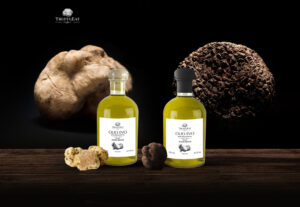
Pastina, which literally translates to small or tiny pasta, is the name given to more than 30 Italian soup pastas. Most kinds of pastina are very small. Traditionally, Italians cook this tiny pasta directly in a soup or broth. But, they also use it in baby food, salads, desserts and some risotto-style pasta dishes.
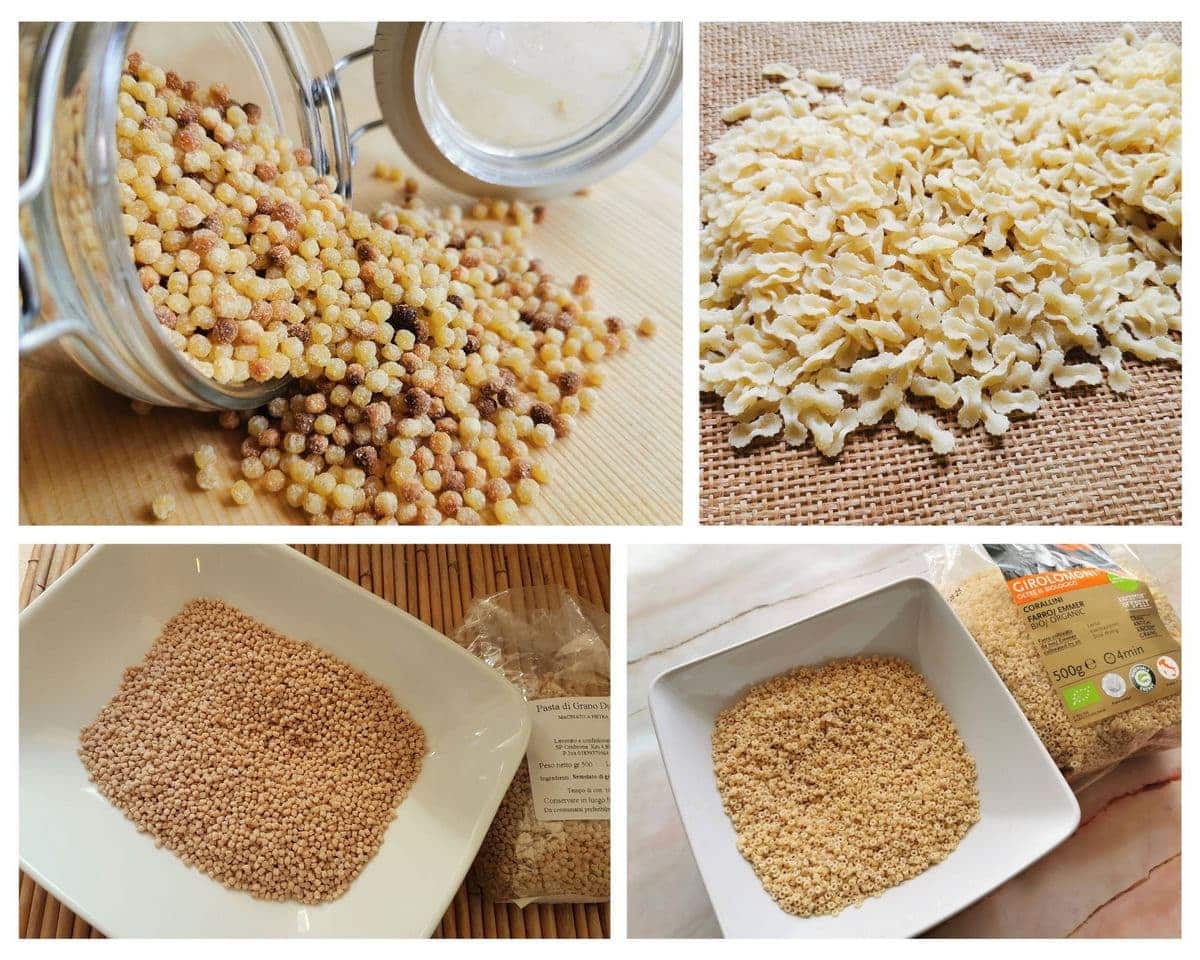
Modern types of these Italian soup pastas come in all kinds of machine-made shapes from stars to letters of the alphabet! However, the concept of adding small pieces of pasta to soups dates back centuries. In fact, there are quite a few types of pastina which were and, in some cases, still are made by hand.
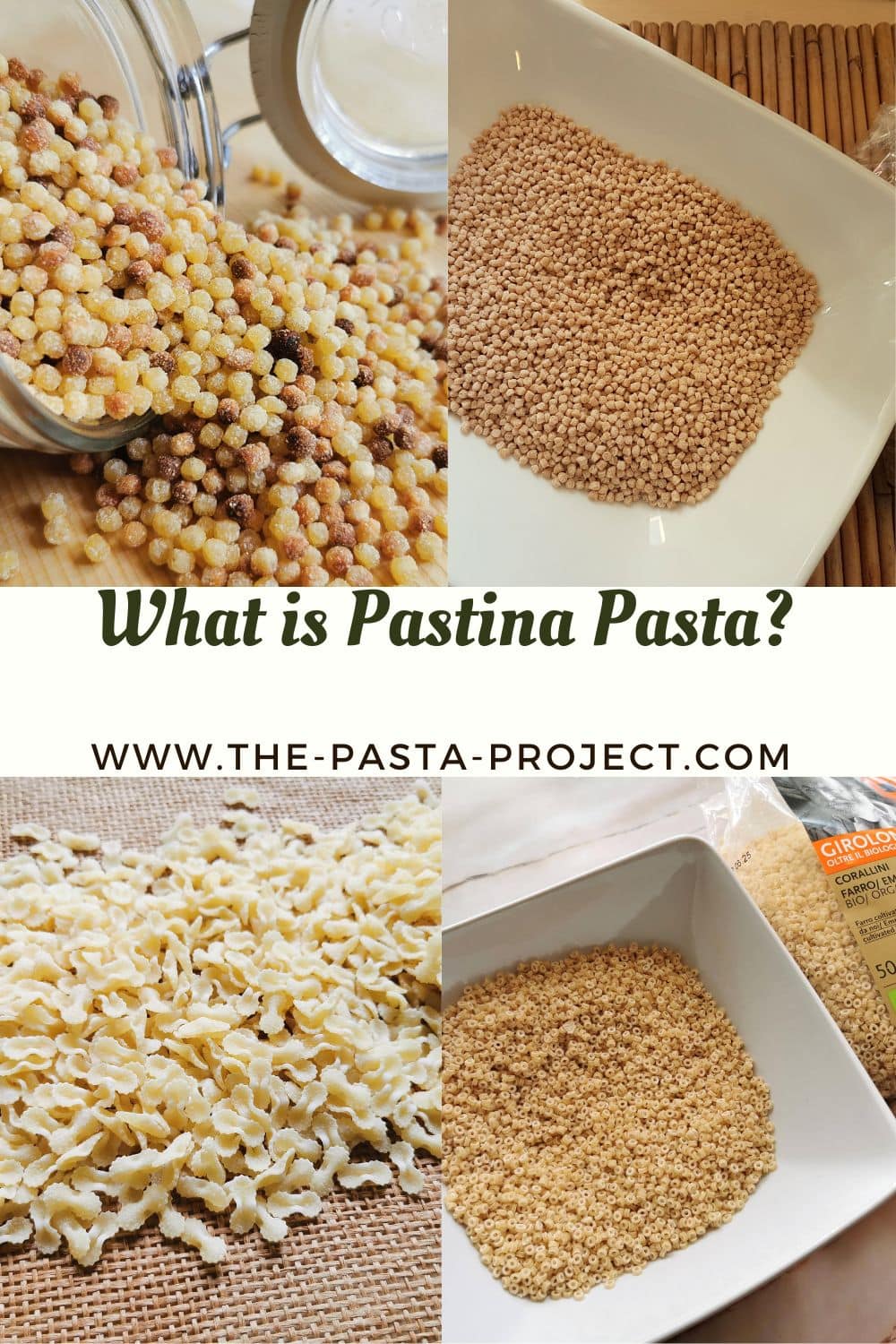
The many different shapes and names of Italian pastina.
For a lot of soup pasta fans in the USA, the only type of pastina they know and use is stelle or stelline (stars), also called fiori di sambuco (elder flowers) and astir (stars) in Italy. However, although some varieties of Italian pastina look pretty similar, they have different names.
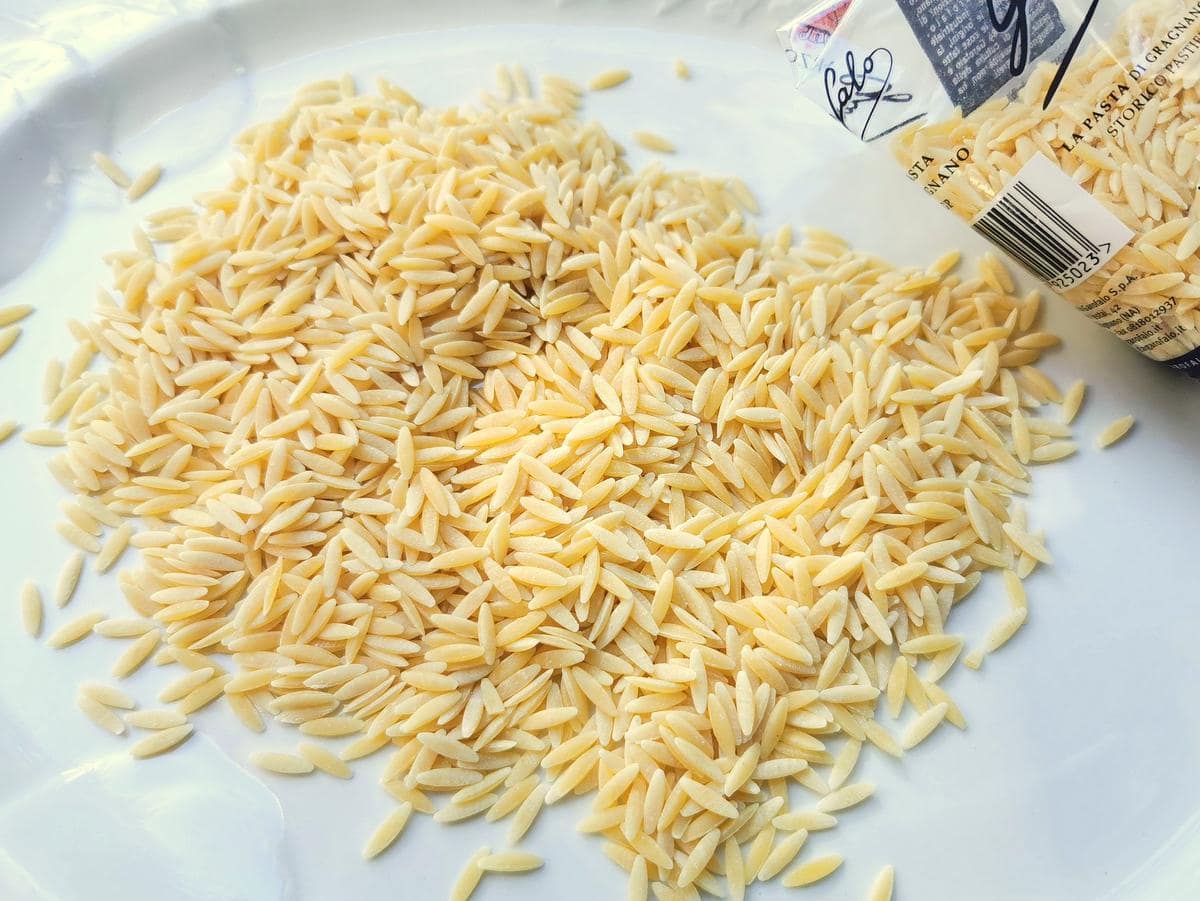
For example, lots of pastina shapes allude to seeds of fruits, grains and legumes. To name a few, there’s semi di cicoria (chicory seeds), semi di grano (wheat), semi di mele (apples), semi di melone (melon), semi d’orzo (barley), semi di peperone (bell pepper), semi di popone (melon), semi di riso (rice), semi d’avana (oat seeds), pignè (pine nuts), acini di pepe (peppercorns) and pepe bucato (peppercorns with a hole).
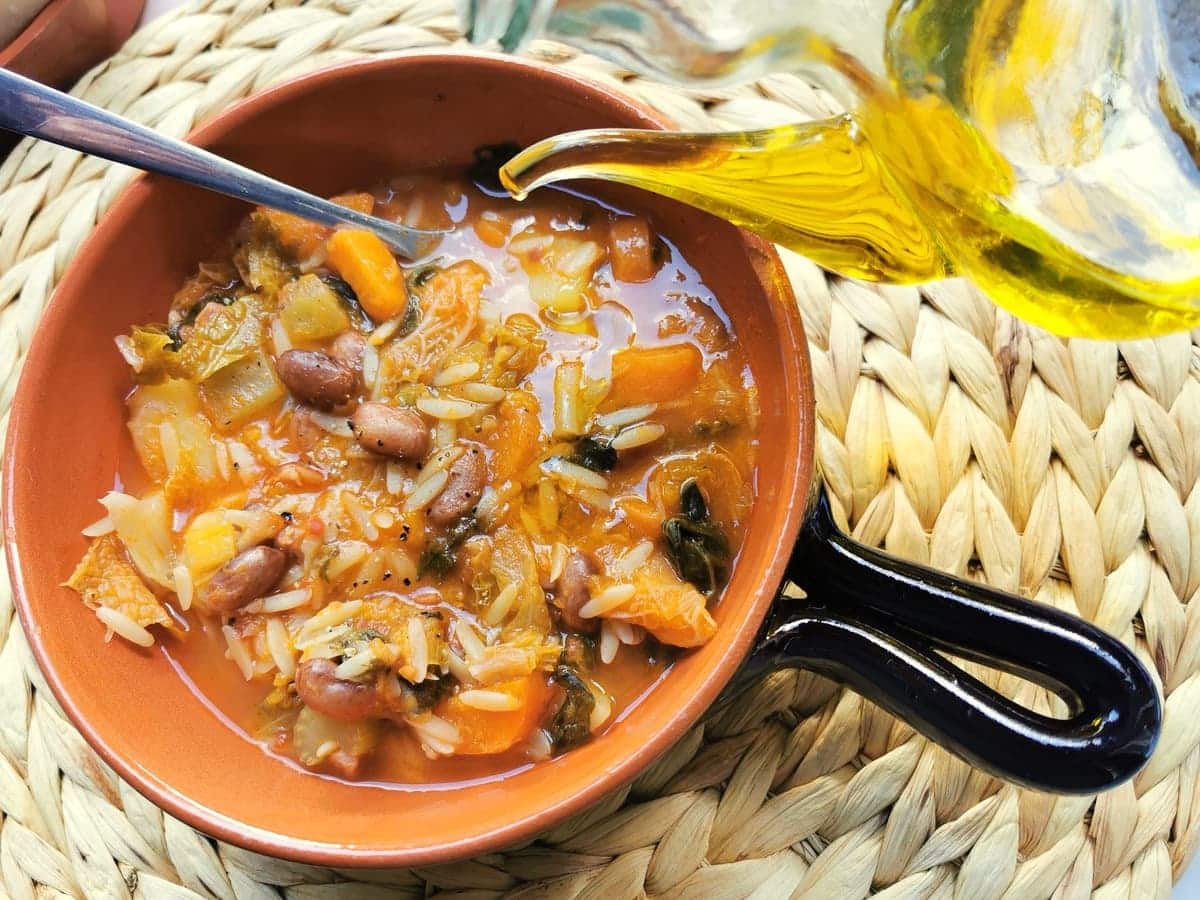
Of the above, two of the most well-known are semi di orzo, also called just orzo, and semi di riso (risoni). These are basically the same. Both actually look like grains of rice. You can find this pastina sold as orzo or risoni. According to Italian Wikipedia orzo originated in Tuscany. Orzo pasta is also used in Greece, Spain, Turkey and other Arab countries, not just in Italy.
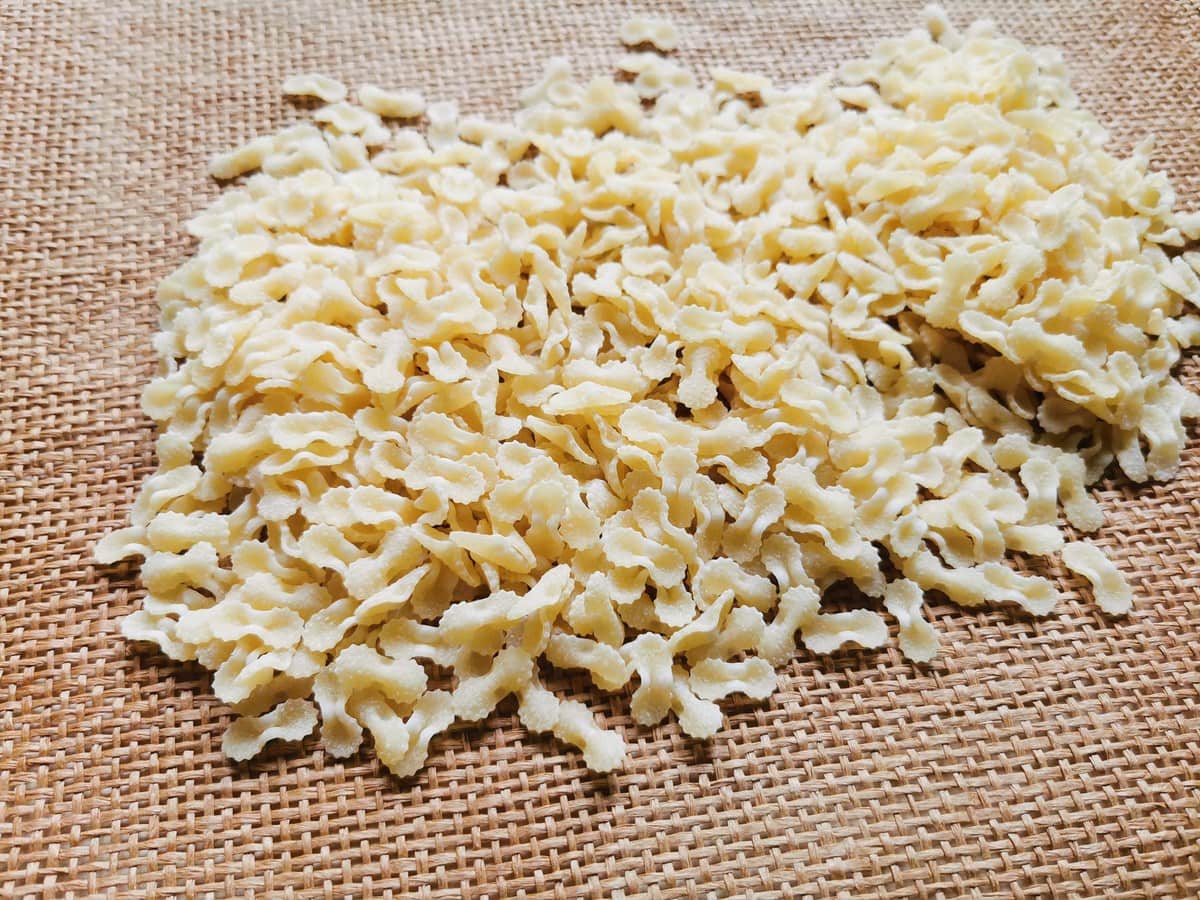
Acini di pepe is another popular pastina also found outside Italy. In fact, there’s a Jewish dish called keskasoon which is made with acini di pepe and chickpeas. Plus, in some parts of the USA, they make a sweet pasta dish called frogeye salad with this pastina, canned fruits, egg custard, marshmallows and whipped cream! Acini di pepe originated in Liguria.
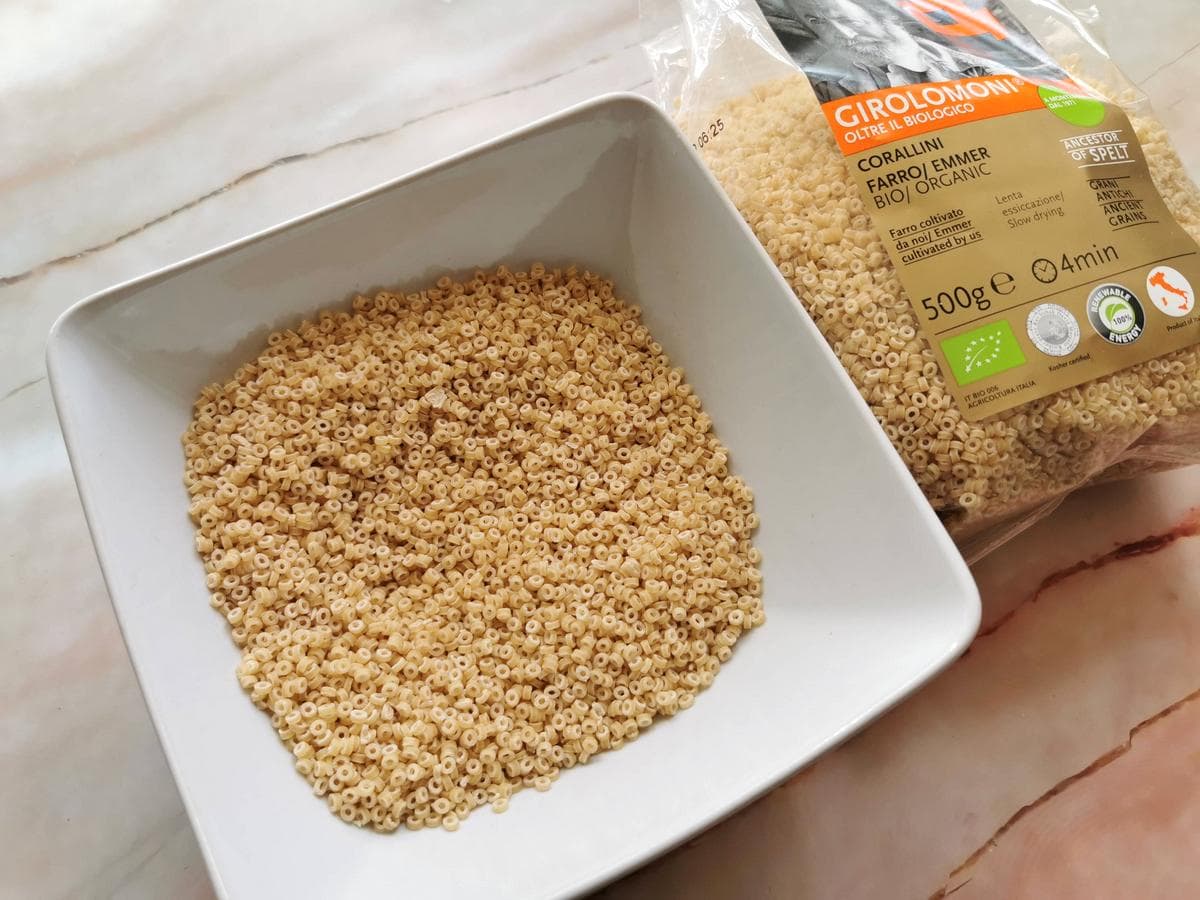
Pastina named after ex-Italian colonies.
Interestingly, there are also some pastas named after ex-Italian colonies. These are Asabessi, Abissini, Bengasine, Tripolini and Tripoline (with an ‘e’) The latter are a long pasta, similar to Mafaldine but ruffled on only one edge. This isn’t typically a soup pasta. You can find it made by Rummo.
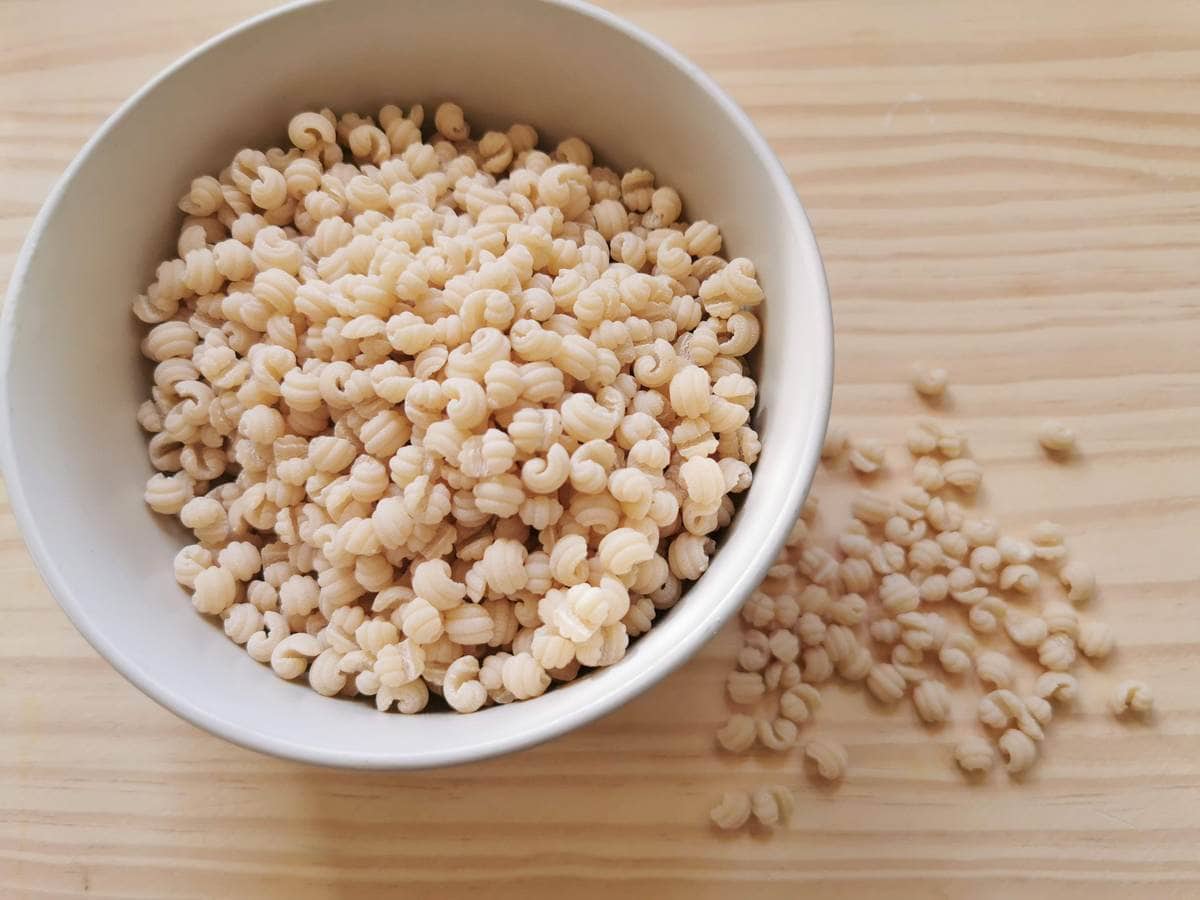
Bengasine pasta are shaped like small bowties with ruffles. Tripolini are similar. Abissini looks like small conchiglie (shells) and asabessi are small ovoids with ruffles. These are all tradtionally served in broth. Pasta maker La Molisana produces abissini rigati.
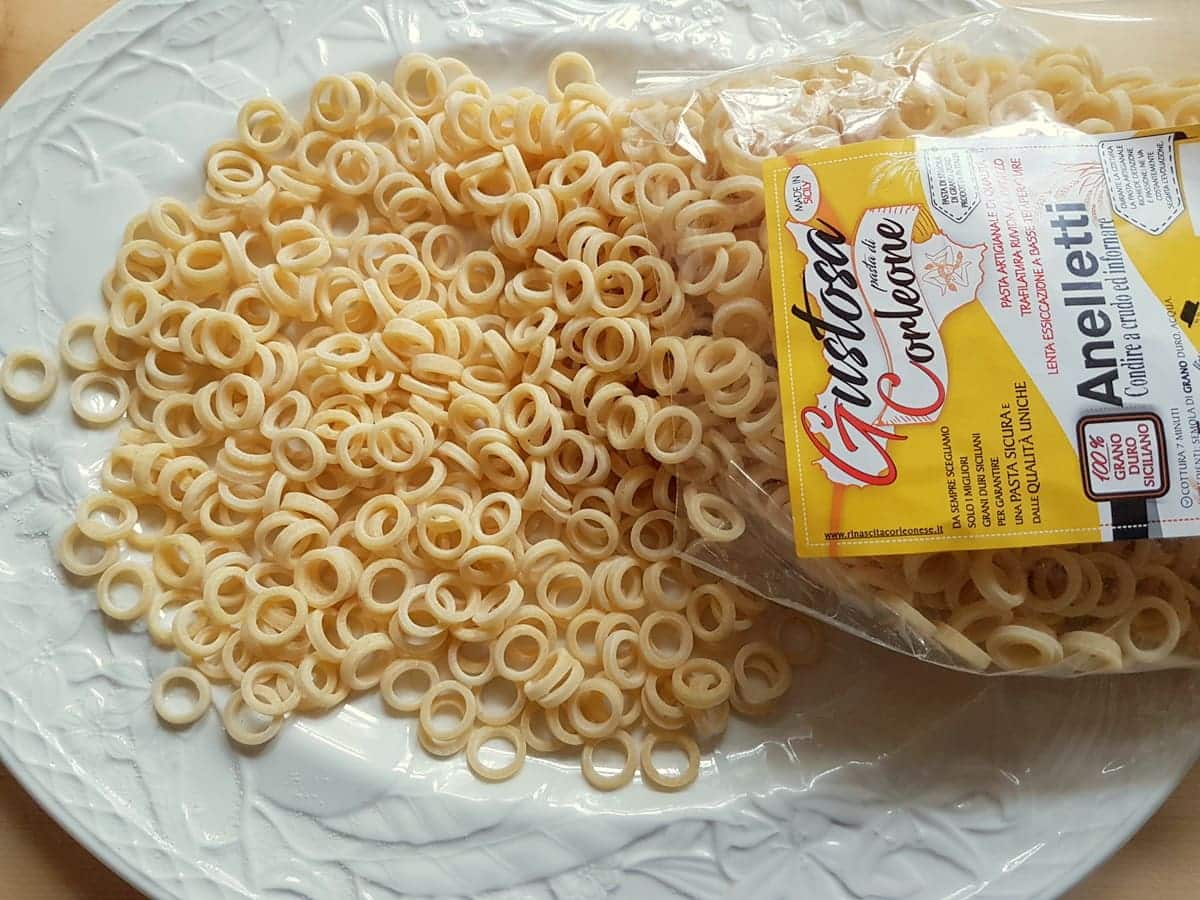
Other types of pastina pasta.
Italians also use other types of small pasta in broth or soups which aren’t as tiny as the pastina mentioned above. However, in the Italian kitchen, they are also classified as pastina.
Examples of these are ciccioneddus (small malloreddus from Sardinia), anelletti (small anelli from Sicily), ditalini (small ditaloni tubes), farfalline (small farfalle – bow-tie pasta) and more.
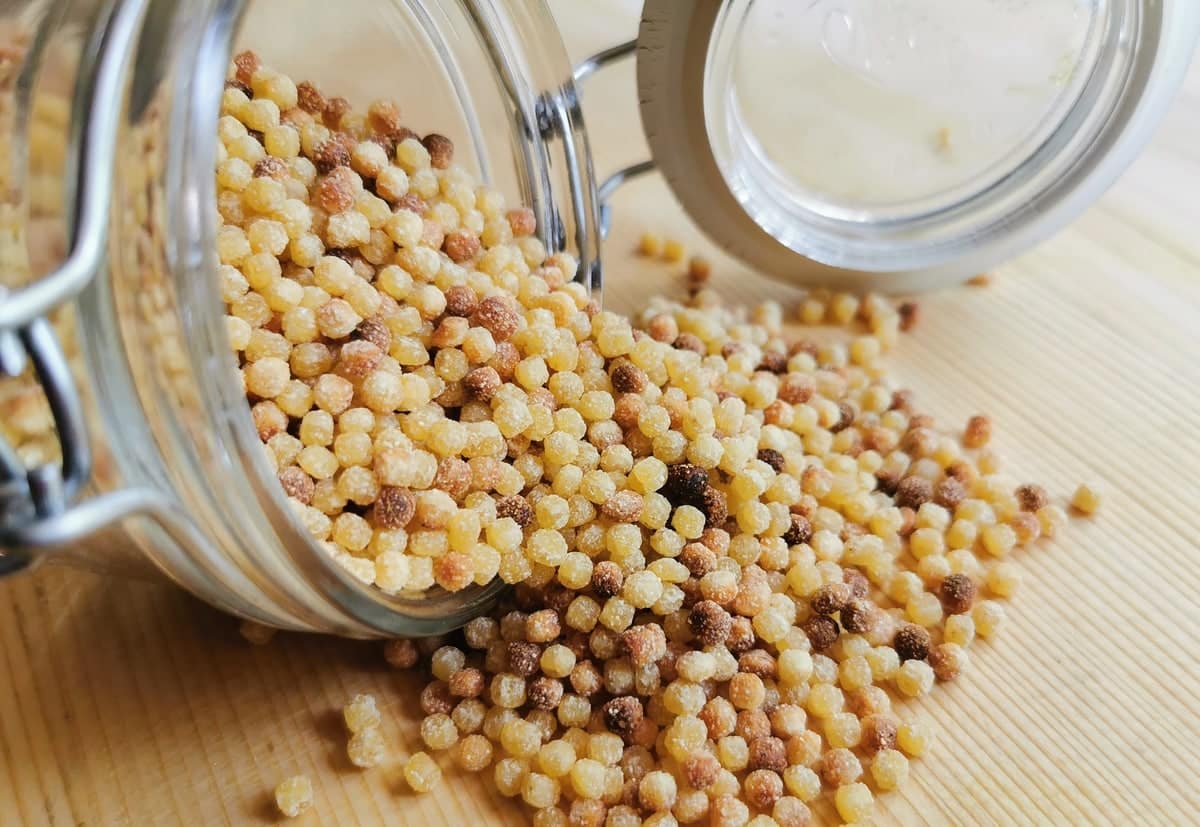
Little pasta soup balls.
One of the oldest types of pastina that are still made by hand today come in the shape of small balls. In Liguria, they make scucuzzu or scuccuzzu’, little balls of pasta which are similar to couscous but made with eggs.
The word ‘scucuzzù’ actually means ‘hail’ in the old Genovese dialect. In the past, there was a lot of trade between Genoa and North Africa and it’s possible scucuzzu was a ‘copy’ of couscous.
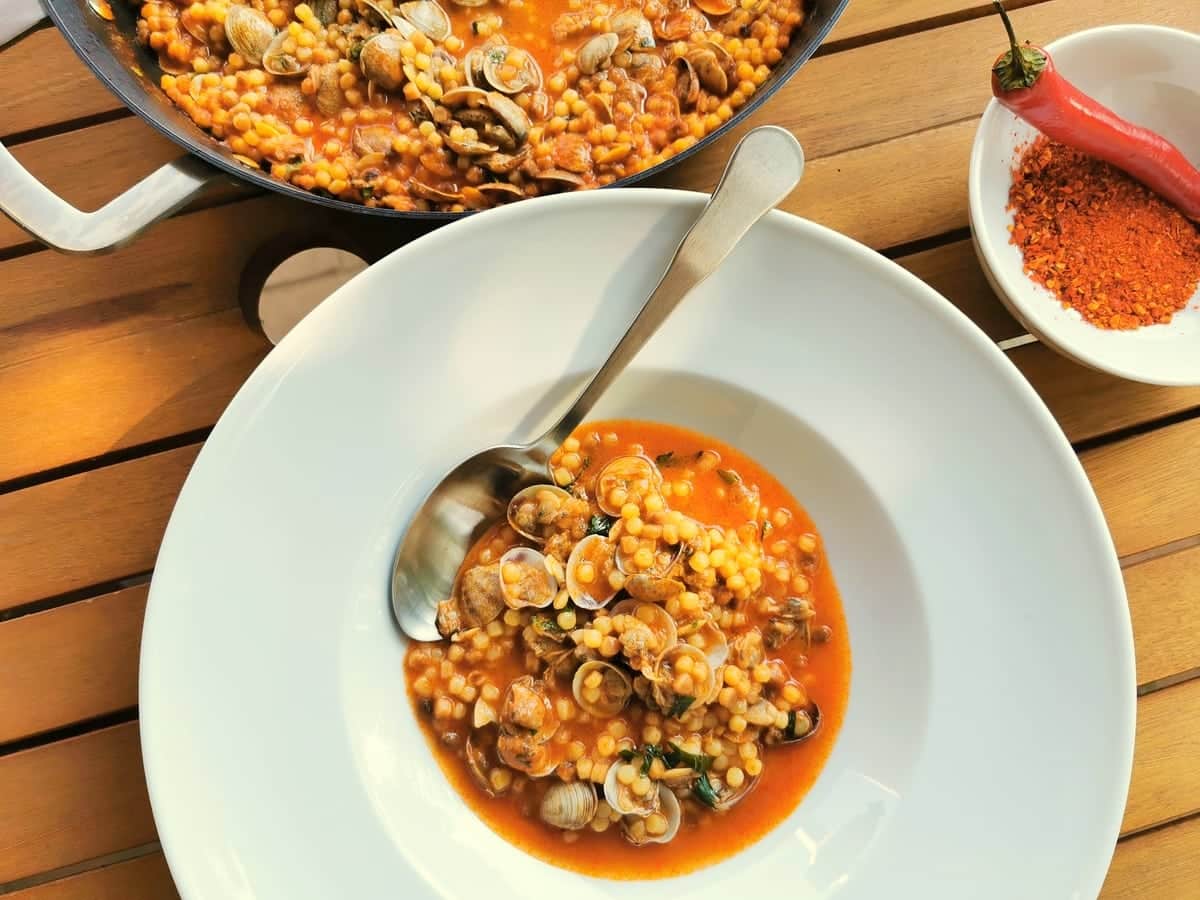
However, you can find similar balls of soup pasta in other regions too, like fregola (fregula) in Sardinia. Both scucuzzu and fregola are available dried. Fregola has become quite well known and popular outside of Italy. I’m not sure if dried scucuzzu is available in other countries.
Grated or crumbled pastina for soup.
Apart from small balls of pasta, traditional homemade pastina is usually made by grating or crumbling the pasta dough into very small and irregular pieces. Pastina that is made by grating the pasta dough is generally referred to as pasta grattata (grated pasta) or grattini.
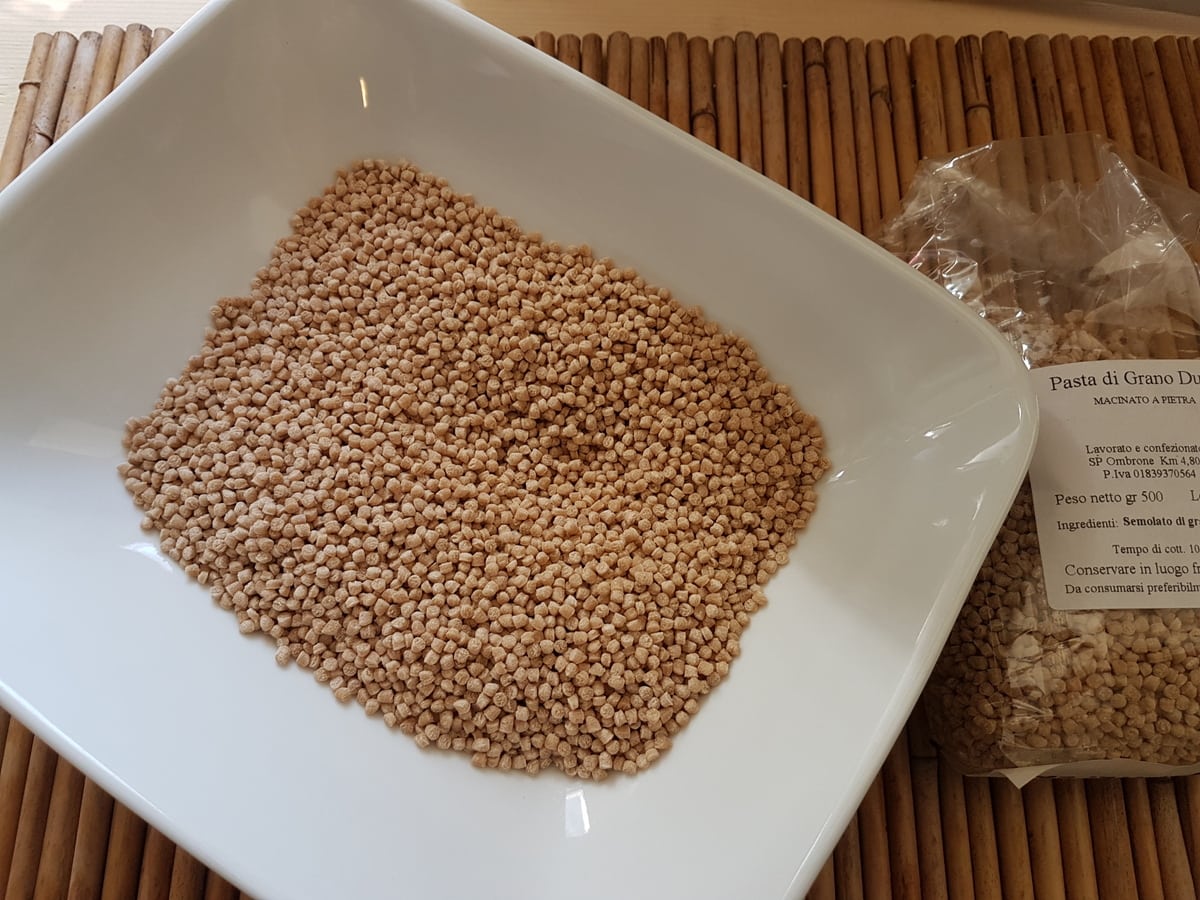
You can buy ready-made grattini but that is actually rounder and more uniform in shape than the pieces you get when it’s homemade. Nowadays, some people make grattini using a food processor.
If you’d like to try making grattini in a food processor check out my gratin-grattini post.
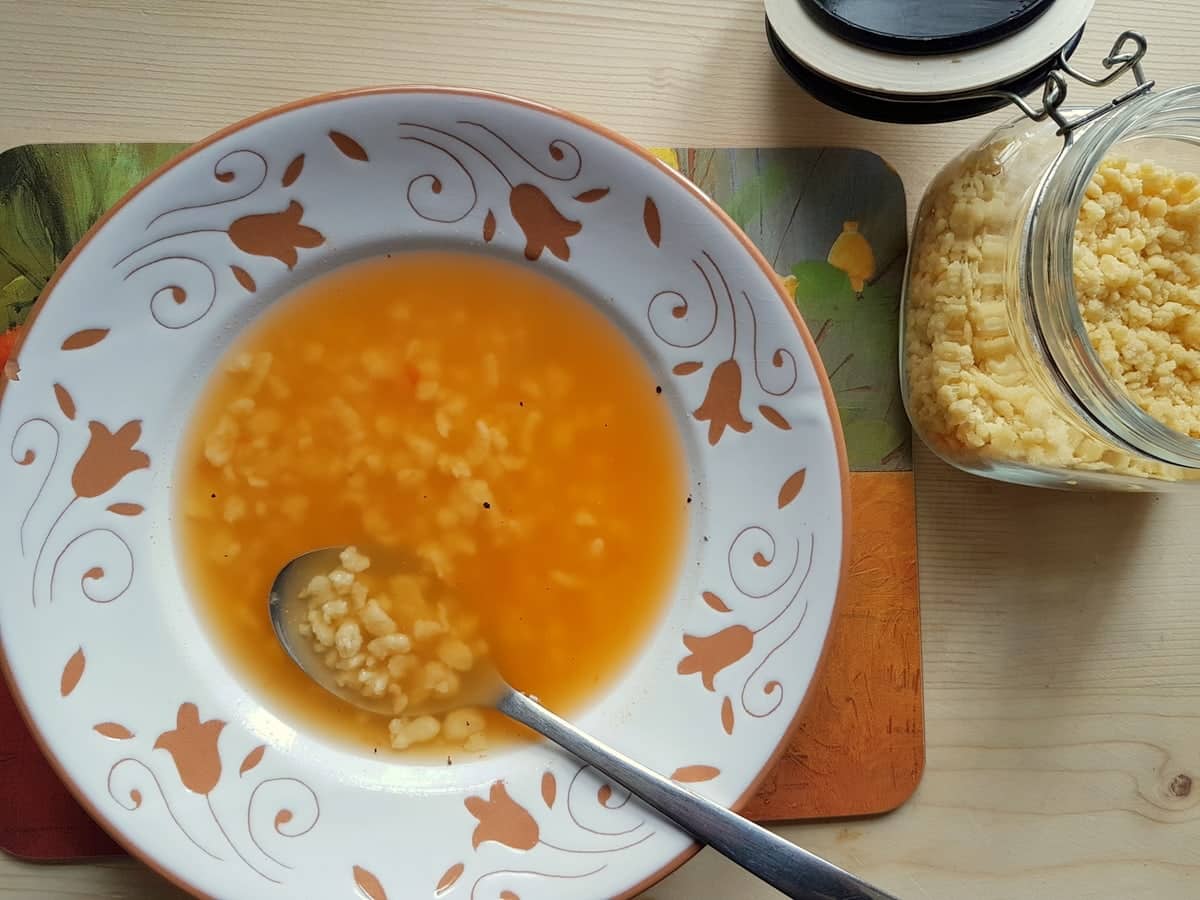
There are also types of grated soup pasta with different names depending on the region where they make it. Examples of this are pasta rasa or ragia from Emilia-Romagna and Lombardy, bilimbandi from Campania and bilant from Basilicata.
Some homemade soup pasta is just crumbled or shaped by hand. In the past, this was often just a simple flour and water pasta, particularly in the poorer more rural Southern Italian regions.
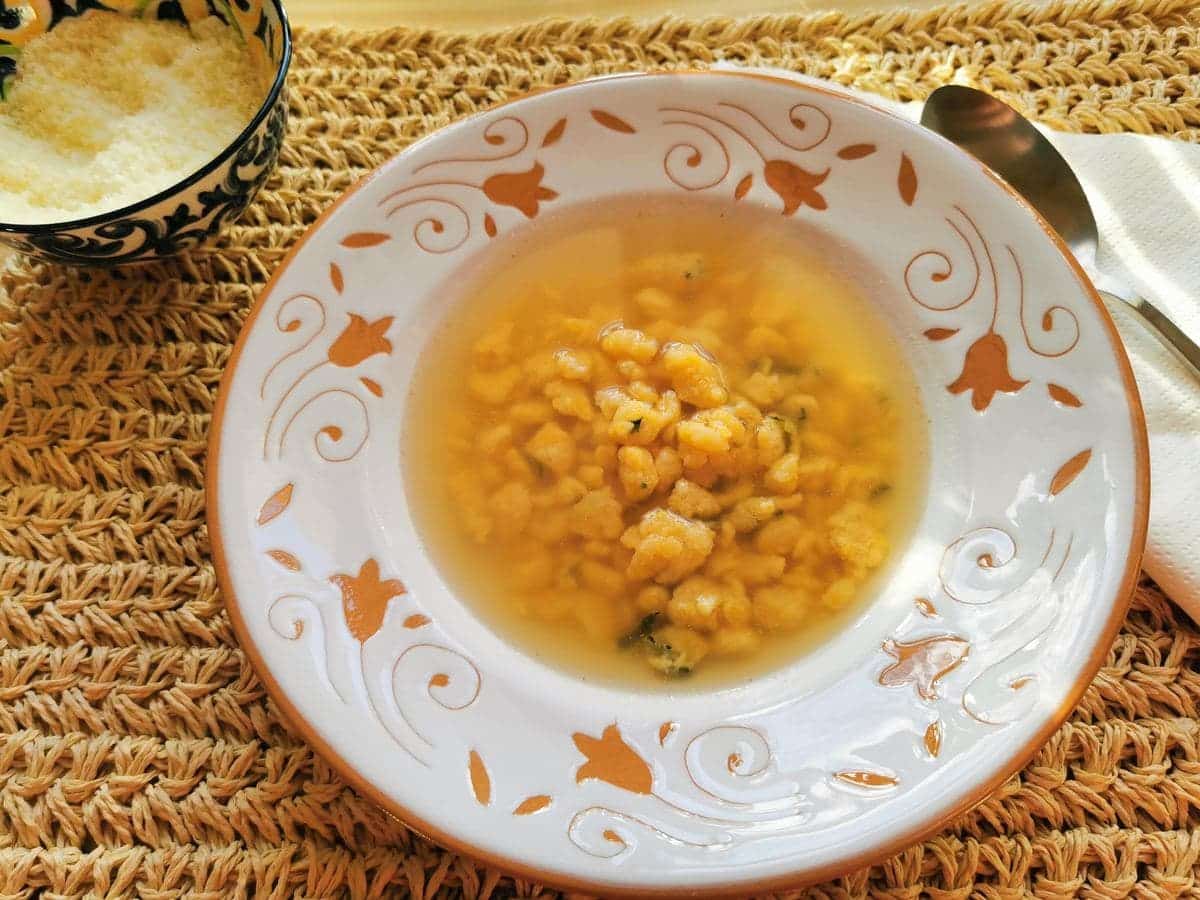
However, nowadays, these pastas are more frequently made with egg and cheese and sometimes parsley in the dough. Centuries ago, this richer type of soup pasta was only found on the tables of the rich or made for special occasions like weddings.
You can find this type of pastina in Basilicata, Puglia and Molise, as well as Sicily and Campania. The most common names are semola battuta, triddhi, milaffanti or millefanti.
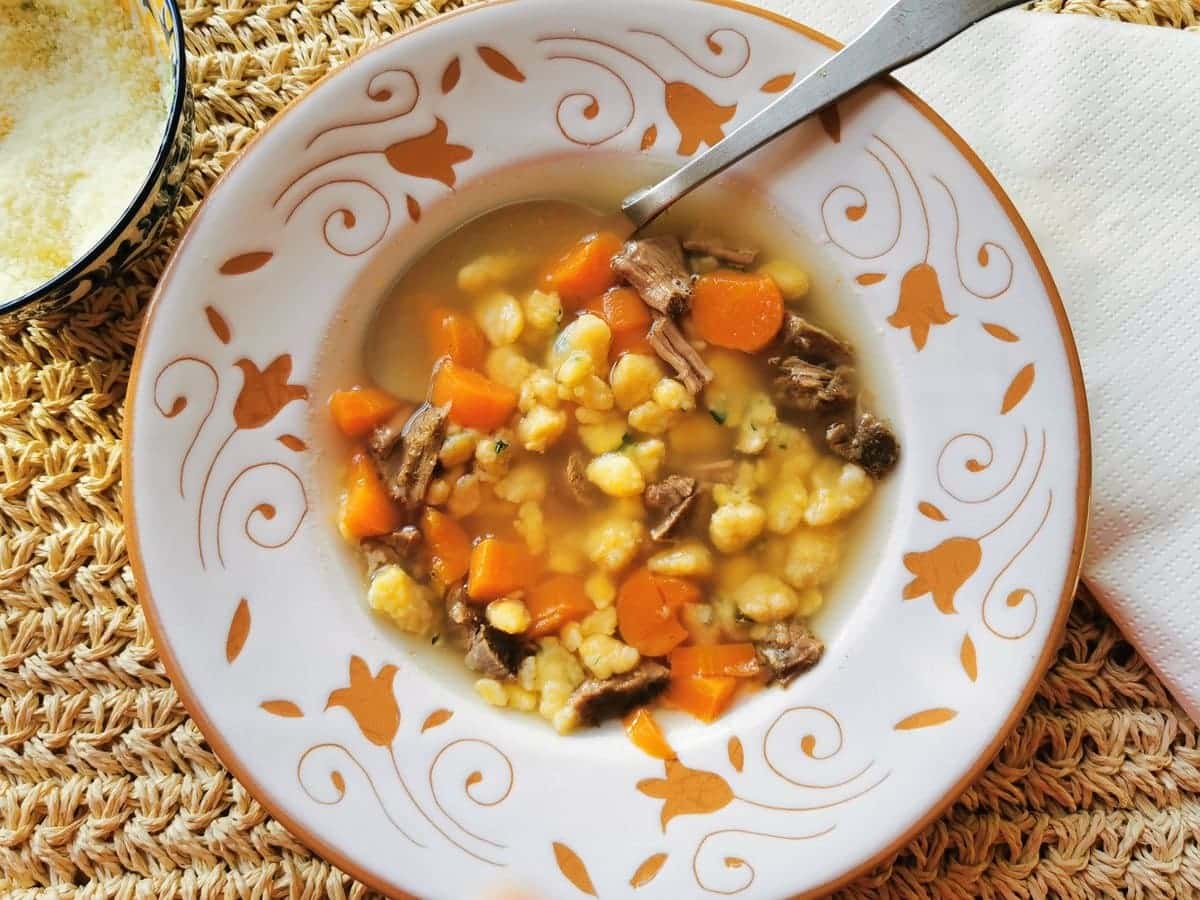
Pastina in broth for kids.
In Italy, pastina cooked in broth is real comfort food given to young children. Many Italians grew up eating pastina from when they were babies. In fact, the well-known Italian baby food company Plasmon makes a number of baby foods with pastina suitable for babies from 4 months of age.
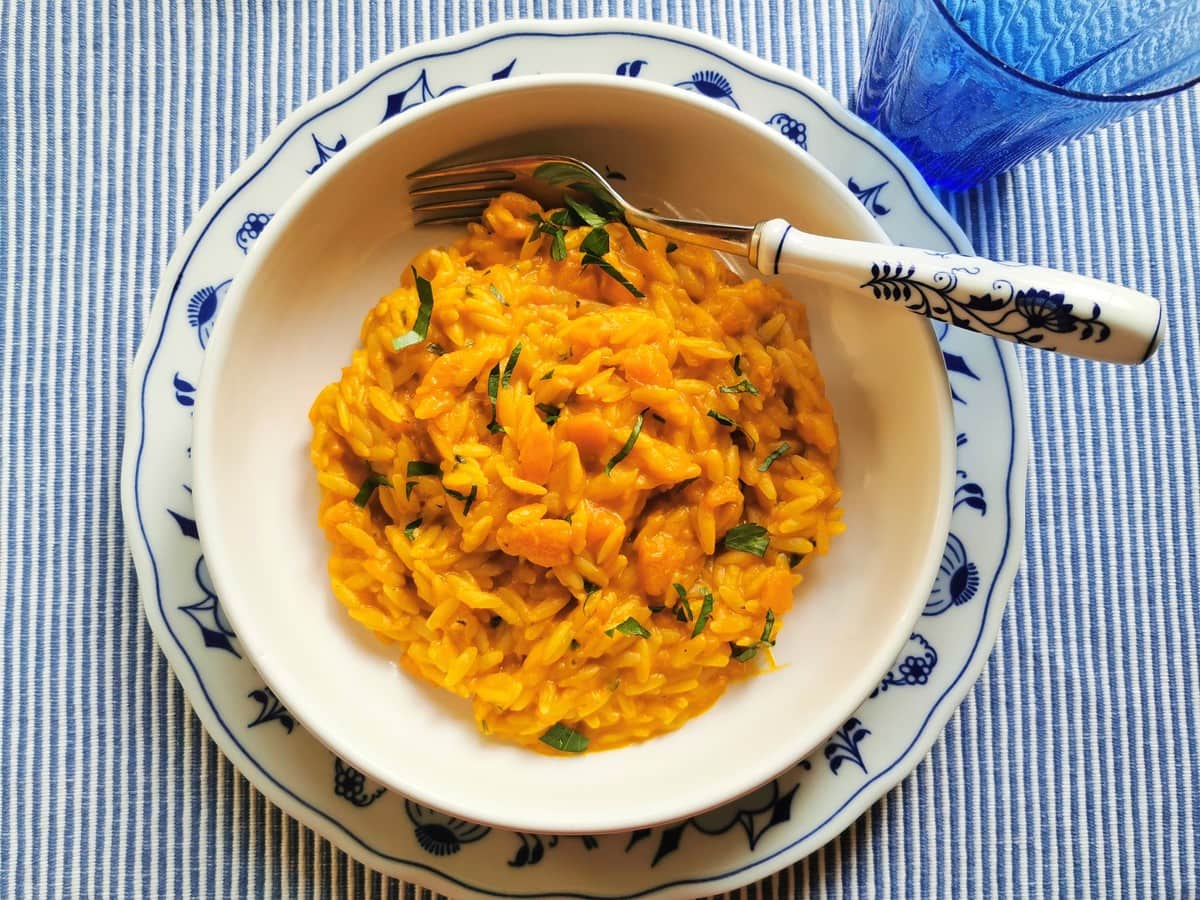
Italian pastina in broth is often called ‘minestrina’. The broth can be made with fish, meat or vegetables. But the most popular for children is chicken or vegetable broth. Some Italians add grated Parmigiano or a dash of olive oil as well.
Italian penicillin.
Of course, pastina in broth isn’t just for children. Many Italians continue to love it throughout their lives but particularly when feeling unwell. This pasta soup is the Italian equivalent of chicken noodle soup or matzo ball soup. It’s every Italian grandmother’s remedy for many ills whether it’s the flu or a stomach upset. In fact many refer to it as ‘Italian penicillin’!
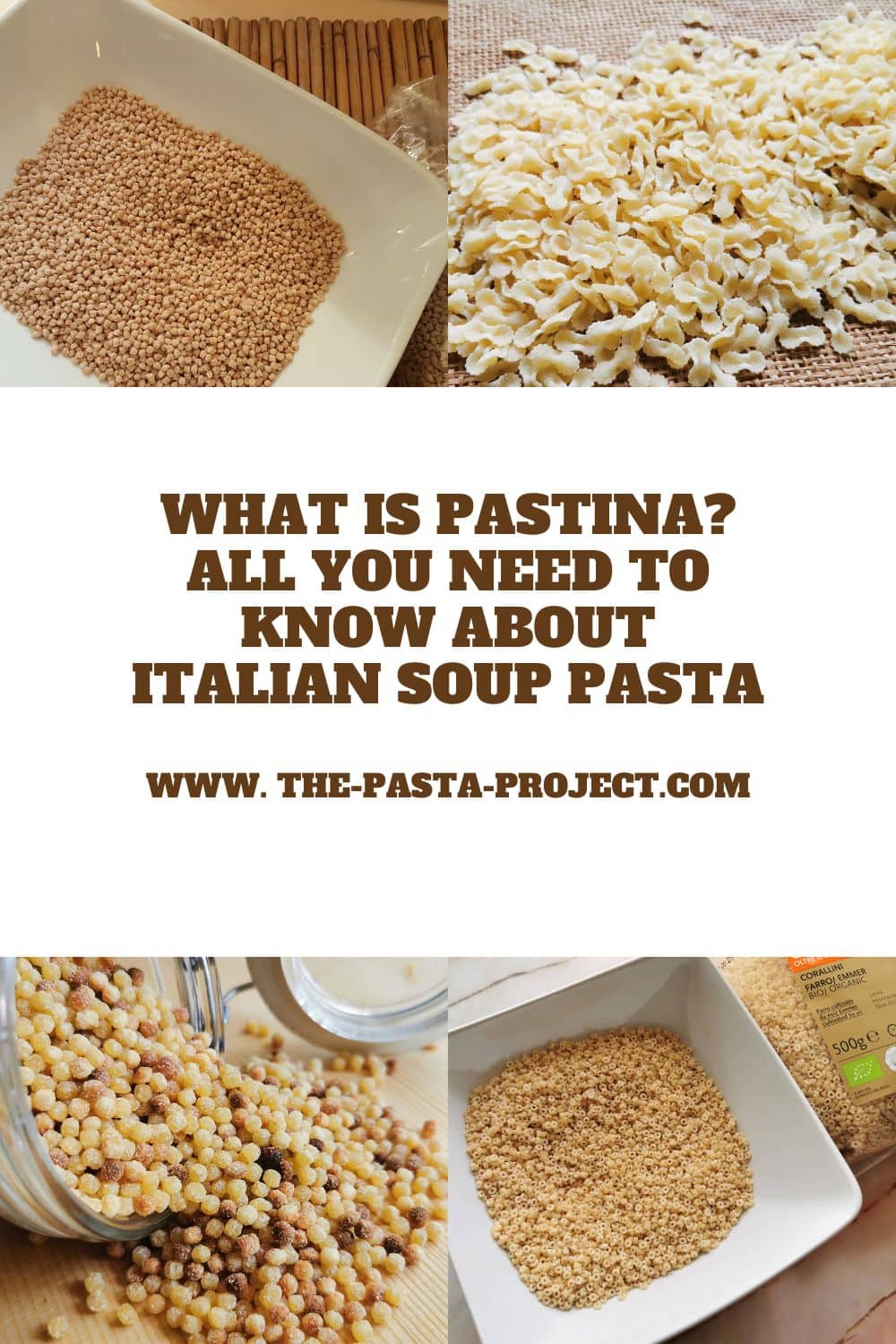
Nowadays, Italians use pastina in other recipes and different soups not just broth. Click on the links below for some of the recipes with pastina here on The Pasta Project and how to make homemade pastina too!

